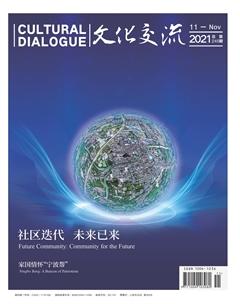鲜活生动 传播典范
邱巍
浙江人民出版社的《漫画百年党史 · 开天辟地》,由原中共中央文献研究室副主任陈晋和青年漫画家陈磊领衔的混知团队共同创作,以漫画形式解读百年党史,开辟了党史传播的新天地,是鲜活生动党史传播的典范。
这是一本形式新颖、别开生面的党史书。中央要求在全社会开展党史学习教育,范围不只是党员,包括大量非党员和青少年。很明显,类似36万字的《中国共产党简史》,一般群众和青少年可能很难从头到尾看完。这就对我们以短小精悍的篇幅、生动形象的形式传播党史提出了要求。我们的党史文献系统、党校系统、高校系统都在做党史研究和党史传播的工作,但很多时候传统的党史界更多地考虑的是研究,把党史事实和理论说清楚,对于以怎样的形式传播从而让受众接受考虑得不够多。这样的一本书,其实给我们很大的启发。从传播的角度看,怎样能够让人一下子读得进去,两三个小时就把这段历史看完,这个其实很不容易。这本书就是一个很好的传播党史的形式。这个形式,能够呈现这样好的一个效果,我想和我们的创作团队密切相关。
强强联合的创作者队伍保证了书的高质量。陈晋老師长期从事党史研究和传播,是党史学界的前辈专家。陈晋老师在党史学界一开始的时候最有影响的就是他的党史创作富有思想性和文学性。中央电视台出的多部文献纪录电视片,解说词都是陈晋老师写的。他的解说词立足党史史实,气势磅礴、催人深思、令人奋进。陈晋老师其实是党史界最早开始关注把党史从书本走出来带到大众当中的前辈。所以他在思想性和文化性方面都走在前面。正像他自己说的,通过漫画的形式和“80后”“90后”团队的共同创作,和现在的年轻人一起出书,对他而言可能也是一种新的尝试。但实际上,这表明了一代人都有一代人愿意接受的新形式,我们要不断满足这种需求。可以说,混知漫画团队和陈晋老师合作,通过这样一个形式把党史较好地呈现了出来。
强大的编创队伍保证了这本书有一个比较好的基础和框架。1921年到1949年,这28年的历史,写的方式各种各样,本书把它分成10个部分,有它的道理,每一个部分也有相关史实的支撑,写到什么程度也有分寸。这个分寸包括了对整个党史重点内容的展示,对新的史实材料的采纳,以及漫画形式的适当聚焦。本书的整体框架体现了党史的基本史实、基本框架,又不乏新的学术成果展现,特别是像解放战争等部分运用了比较新的研究成果,比以前的党史视野更开阔。所以它有一个好的框架,也有非常扎实的史实支撑,我觉得这是能够出好这本书的重要基础。
好的内容通过漫画这样好的形式充分展现了出来。陈晋老师提到党史创作要鲜活。“鲜活”二字,大家都知道,但是做到鲜活其实很不容易。这样一本漫画书,初步而有成效地探索了“怎么样能够鲜活起来”这个问题。漫画的形式使党史内容在呈现时具有了很多戏剧效果。本书中所有的人物形象,头脑比较大,但是四肢很小。本来四肢很小,作者又让它跳舞,这便产生了很有画面感的戏剧效果。这本书里面很多情节设计都是依据史实,又很恰到好处,同时又很有分寸感。比如说一开始的近代中国历史用了全国统一考卷的形式,和读者群体中的中学生、小学生特别贴近。又比如说卢沟桥事变的时候,日军的台词是“开门,丢人了”。这个台词肯定是创作出来的,但它背后的史实是日军以一个士兵失踪为由,要求进宛平城搜查,这就形成了一个梗在里面,能够让你看了以后会笑出来。又比如重庆谈判的台词设计,确实符合那时候的人物心态。蒋介石在发了电报以后,他想毛泽东最好不去,就是“放鸽子”,结果毛泽东去的时候我们仍然是放鸽子,放的是“和平鸽”。它确实是一个想出来的梗,但是它很贴近史实,所以这是一个很好的设计。实际上,阅读速度快点的读者可能两三个小时就翻完了,但是创作背后的工作非常多,有那么多的历史场景,要把它设计成一个个漫画场景,而且是有梗的漫画场景,其实很不容易,每一个步骤都要经过很多头脑风暴。
应该说以上这几个方面,都为这本书奠定了很好的基础,成为爆款书,我想也是一个必然的结果。
可以说这本书很好完成了党史传播的科普任务,他们团队本身也擅长科普传播。如果说这本书以后还有什么可以提升的空间,就是在科普的基础上探索出如何去体现史实以外更深刻的关于历史规律性的东西、如何去表现思想的深刻性,怎样能合上书后,想到那些梗时,还能回味一些更本质的问题?当然这个要求就非常高了,可能很难一下子达到,但是因为“开天辟地”有了一个非常好的基础之后,就应当要探索“再创辉煌”的路。
How to Tell Stories Vividly
By Qiu Wei
Co-created by Chen Jin, former deputy director of the Party Literature Research Center of the CPC Central Committee, and Hunzhi, a team led by young cartoonist Chen Lei to share knowledge of history, science and culture through cartoons and comics, 100 Years of CPC History in Comics: The Making of an Epoch is destined to be a paragon in communicating the stories and the history of the Communist Party of China (CPC) in a most vivid way. The book, published by Zhejiang People’s Publishing House, is the first installment of the “100 Years of CPC History in Comics” series.
To begin with, this is a groundbreaking and unique book on Party history. The CPC Central Committee has called for the study of the Party history throughout the whole society, which is aimed at not only Party members but also a large number of non-Party members and young people. While serious books on Party history abound, it is evident that a tome such as the 360,000-word A Brief History of the Communist Party of China may prove to be too trying for the general public and teenagers to read word for word. Therefore, to communicate the Party history in a more concise and refreshing manner is an important point to ponder on. It is true that Party history literature specialists, Party school researchers and university scholars have been doing an admirable job studying and disseminating the Party history. But most of the time, their focus is more on the research per se: telling the historical facts and theories accurately is sufficient. How to spread the messages and how to make the messages more palatable to the tastes of the general public are only secondary considerations. It is surely not easy for people to swallow the history in two or three hours, but the book 100 Years of CPC History in Comics: The Making of an Epoch has achieved precisely that.
Second, the book’s success has a lot to do with its authors. Chen Jin has been engaged in the research and dissemination of Party history for a long time and is a senior expert in this field. A major strength of Chen’s writings on the Party history is his sharp insight and his literary language. He has penned the narrations for many Party documentaries produced by CCTV, China’s central television station. The language of the narrations, based on historical facts, is magnificent, thought-provoking and inspiring. Indeed, Chen is among the first Party historians attempting to bring the Party history from the “ivory tower” to the general public, and it is no surprise he is ahead of the curve. As he said, it is a new experience for him to work with the “post-80s and post-90s” (those born in the 1980s and 1990s) on this book, but it shows that for every generation, there are new forms of expression that they are willing to embrace, which should be constantly satisfied.
Then, a strong creative and editing team ensured that the book had a good foundation and a solid framework from the beginning. To cover the 28 years of history from the founding of the Party in 1921 to the founding of the People’s Republic of China in 1949, there can be a variety of approaches. This book has divided it into 10 parts, each supported by detailed history and each with a proper mix of hard facts and interesting comic art. As well as the Party’s general history, new academic research has also been incorporated.
Last but not least, the book has made the Party history come alive, which is often easier said than done. Although all the historical characters have been turned into cartoons, the authors have taken care not to over caricaturize any people or any event, making the book both a fun read and a valuable historical guide. For example, the first two parts on China’s modern history were presented in the format of test papers, which middle-school and primary-school students may easily relate to. When it comes to the Lugou Bridge Incident, the line the invading Japanese soldiers uttered was “kai men, diuren le”, which could be translated and understood in two ways. One is “Open up, we lost a person”, the pretext used by the Japanese army to launch a full-scale invasion of China. Another is “Open up, we are a disgrace”, which will unquestionably produce hearty laughs. Another example is the Chongqing Negotiations, when Chiang Kai-shek sent an invitation to Chairman Mao to come to Chongqing, hoping instead that he would “fang gezi”, which, literally translated as “release a dove or a pigeon”, means “to miss an appointment or fail to keep one, or stand somebody up”. In the end, Chairman Mao did “fang gezi”: by accepting the invitation and joining Chiang in Chongqing, he “released the peace dove”.
All in all, this book has accomplished the goal of communicating the Party history to a wider readership. For the following books of the series, the authors could do worse than dwelling more on how to guide the readers to think even deeper about the stories and the history behind those hilarious one-liners. It may well be a demanding task, which, well executed, will make the series even better.

